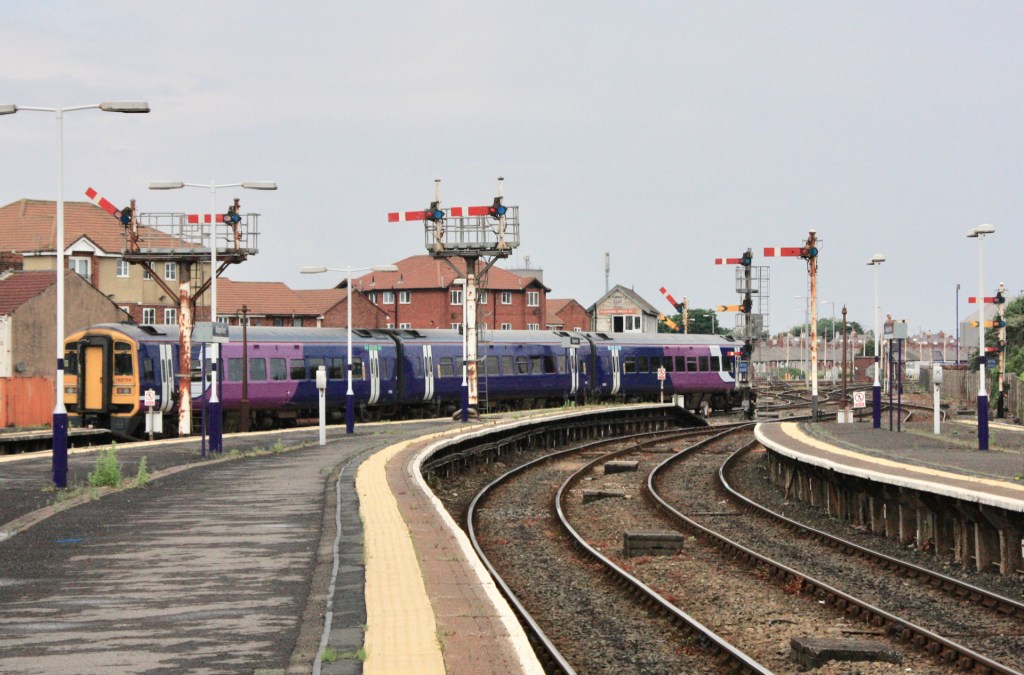
FIVE YEARS after I began touring Britain in search of surviving semaphores to describe and photograph for my planned book seems like a timely moment to take a look back at the many places which have lost their mechanical signalling in that time.
While there are still some wonderful outposts of mechanical signalling, a considerable amount has been lost in the period since 2016, notably on Humberside, in North Wales, Preston to Blackpool North and the Wherry Lines in Norfolk, all of which feature below.
Our whistle-stop tour of Britain’s recently-lost semaphores begins at a location where a couple of semaphores survive, Norton Junction, but up junction signal (NJ9) was replaced by a light not long after my visit on 1 May 2016, where GWR 166210 passes with the 09.290 Great Malvern-London Paddington.
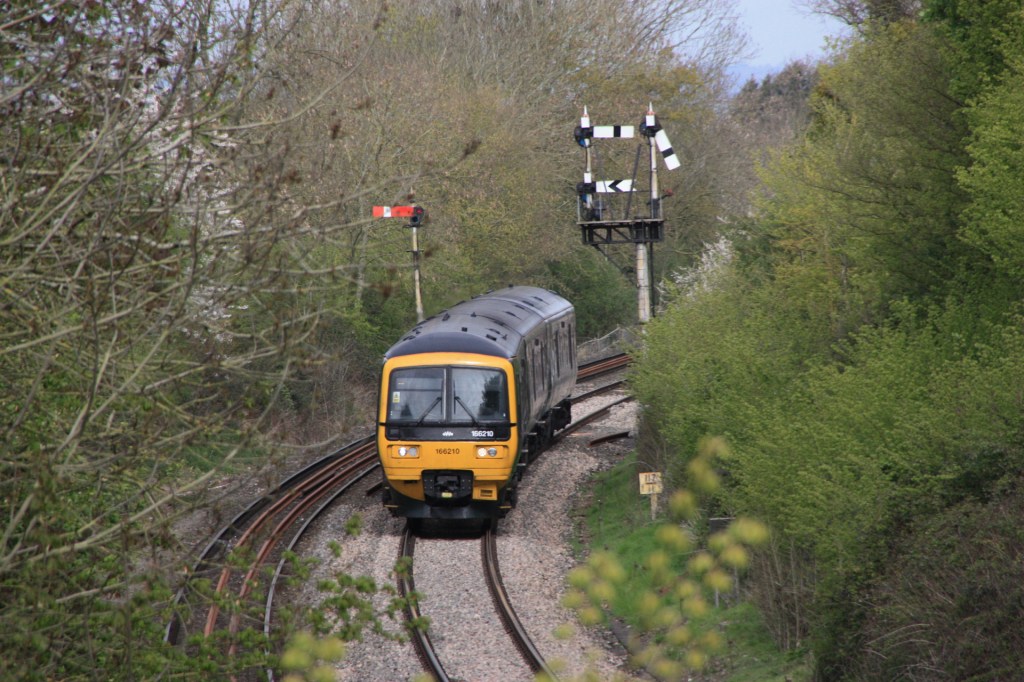
What makes NJ9 interesting is that the distant arm controlling the route south towards Cheltenham was worked from Gloucester Panel Box and was the penultimate working lower quadrant distant signal – the only remaining example now being the down distant signal at Sutton Bridge Junction in Shrewsbury.
Heading north next to the 17½-mile route from Preston to Blackpool North, where a trio of boxes – Blackpool North No. 2, Carleton Crossing and Poulton No. 3 – controlled semaphore signalling until the route was closed for re-signalling and electrification in autumn 2017.
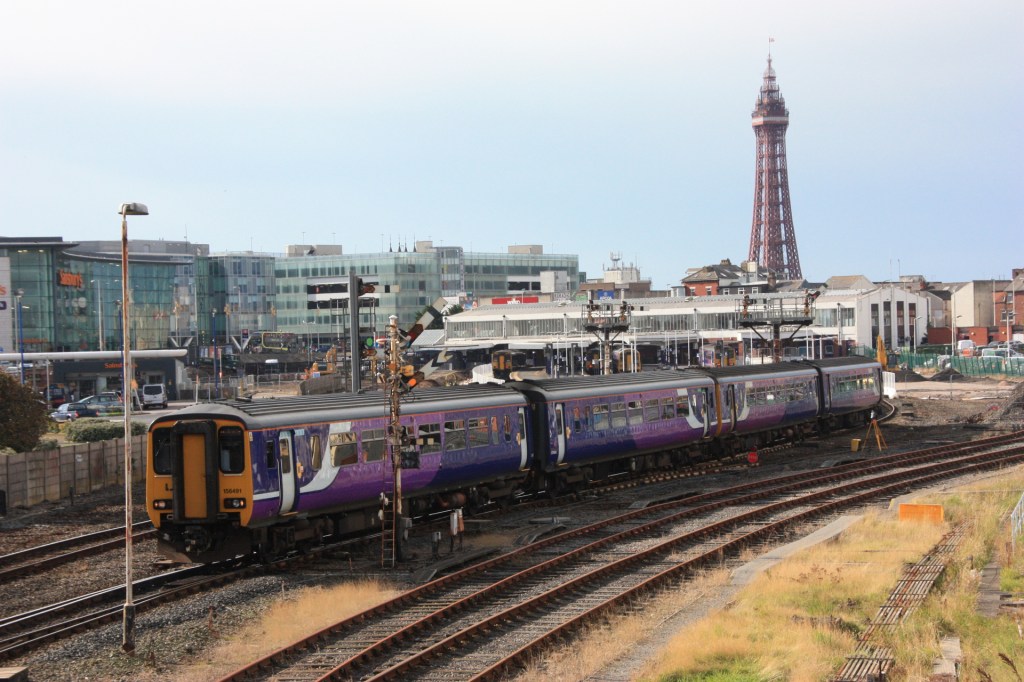
The top photo in this feature shows Northern Rail 158756 departing Blackpool North on 15 June 2016 and passing the fine array of signals controlled by Blackpool North No. 2 Signal Box, while the photo above shows 156491/428 departing on 22 September 2017 with the 10.40 to Manchester Airport.

An interesting feature on the station at Layton, just 1¼ miles inland from Blackpool North, was a distant signal at the end of the up platform, which was controlled by Carleton Crossing Signal Box and is seen above as 142048/150144 pass on 22 September 2017 with the 11.21 Blackpool North-Huddersfield.
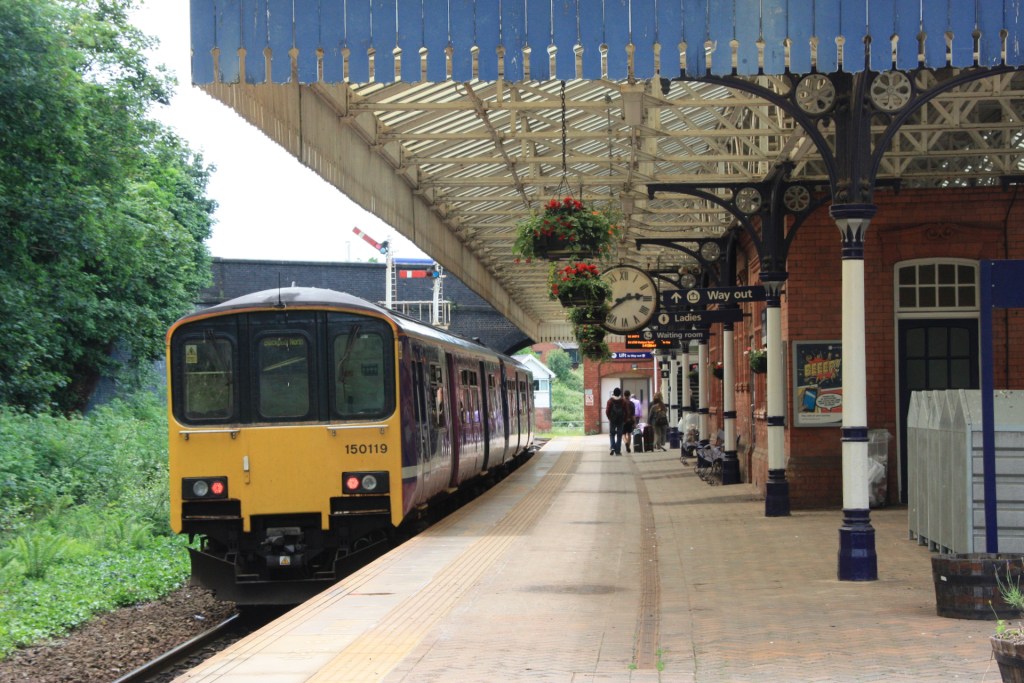
Poulton-le-Fylde is a gloriously well-preserved station on an island platform and one-time junction for the branch line to Fleetwood. In this view (above) from 15 June 2016 150119 is signalled to Blackpool North, with the lower arm on the bracket controlling access to the disused Fleetwood line.
From the Fylde Coast we head next to the north of Scotland, where two other losses in 2017 were the boxes at Forres and Elgin (West), which disappeared as part of an extensive upgrading of the Aberdeen-Inverness route, including a re-siting of Forres station. More recently, this also saw the elimination of the signal box and semaphores at Inverurie.

In the view above 158701 has just passed Forres Signal Box and is about to enter the station’s curving single platform on 7 March 2017 with the 09.02 departure for Inverness, while pictured below are 170432/158715 approaching Elgin West Signal Box on 6 March 2017 with the 17.02 departure for Inverness.


Returning south, two significant 2019 losses on the Highland Main Line were the semaphores and signal boxes at Aviemore and Pitlochry. In the view above 170413 is about to pass Aviemore Signal Box on 1 October 2016 with a service for Inverness while an hour later, and in heavy rain, 170475 departs with a service for Glasgow Queen Street (below).

Much has changed at Pitlochry since this view on 1 October 2016 (below) showing 158733 passing the listed signal box with the 10.45 Inverness-Edinburgh Waverley – the down platform has been extended beyond the closed signal box and all its semaphores, including the attractive down starter PT21, swept away.

Back in England one of the biggest losses of the past five years was the 9½-mile stretch of main-line on Humberside between Gilberdyke and Ferriby, controlled by no less than eight signal and gate boxes, of which all but one (Crabley Creek) were closed in November 2018.

My first visit to Gilberdyke was a misty Sunday morning (8 January 2017) when TPE 185146 can be seen approaching the station with a service for Manchester Piccadilly (above), while the photo below shows Hull Trains 180109 approaching Gilberdyke Junction on 27 September 2017 with the heavily delayed 09.48 London Kings Cross-Hull.
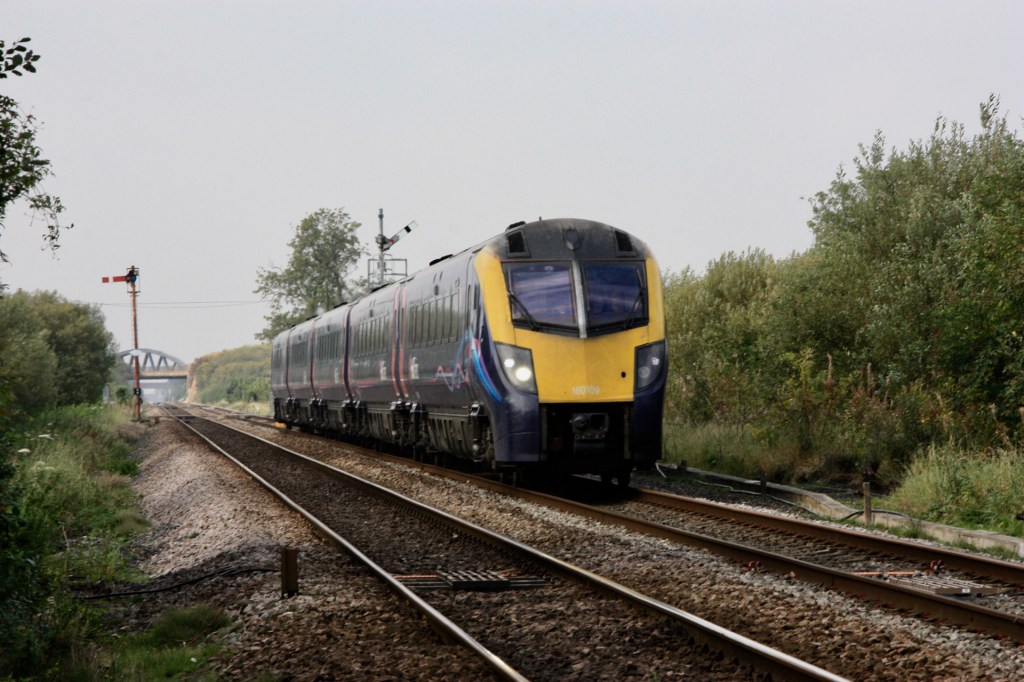

Heading east, the next station along this fascinating stretch of line is sparsely-served Broomfleet, which GBRf 66724 approaches on 9 August 2017 with a working from Hull to Ferrybridge Power Station (photo above).

Just east of Broomfleet was the crossing box at Cave, which 158904 approaches on 9 August 2017 (above) operating a service from Bridlington to Sheffield, with the distant signal here controlled by the box at Broomfleet.
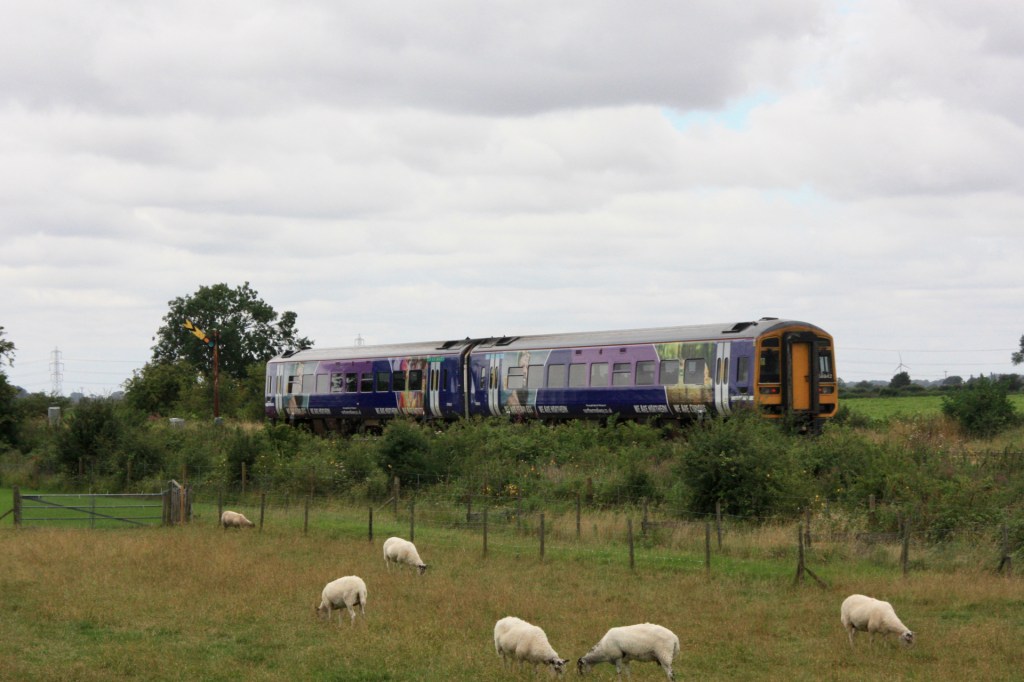
The one box along this section of line to survive is Crabley Creek, which remains in control of crossing gates but no signals. Its final three semaphores comprised up and down home signals and this motor-worked up distant, seen above on 9 August 2017 as 158842 approaches with a Hull-York service.
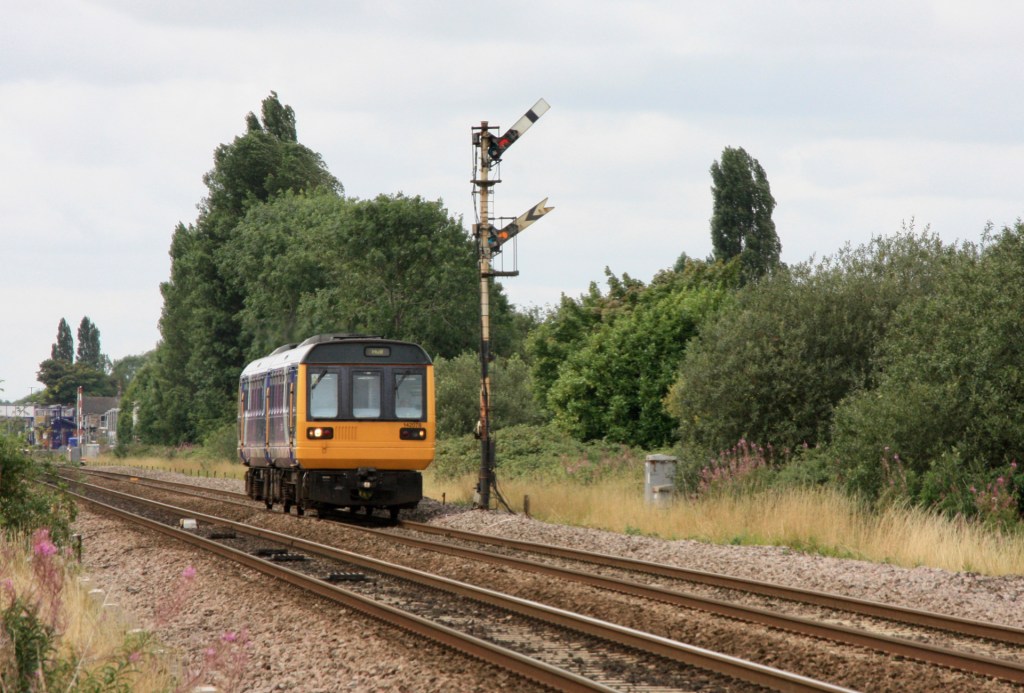
Two final images of this route show 142078 approaching Welton, to the east of Brough, on 9 August 2017 with a service from York to Hull (above), while on 27 September 2017 HT 180111 approaches Melton Lane with the 10.30 Hull-Kings Cross (photo below).
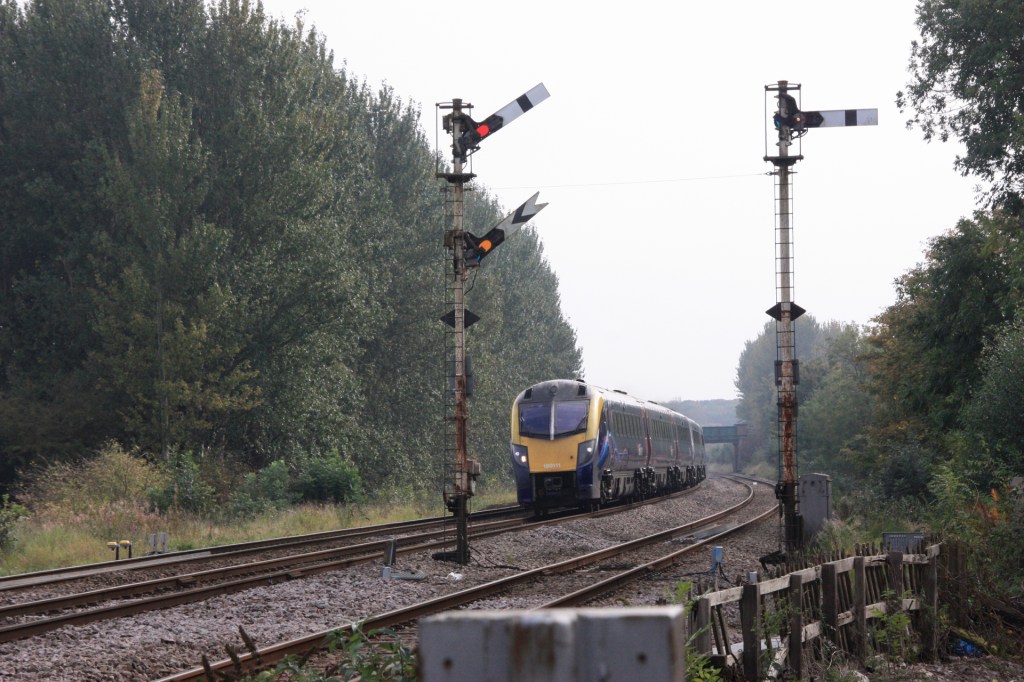
North Wales too saw a significant loss of main line semaphores when the section of this route between Shotton and Colwyn Bay was re-signalled in a £50m project that saw the elimination in March 2018 of seven signal boxes, three of which (Prestatyn, Rhyl No 1 and Abergele & Pensarn) I was lucky enough to visit shortly before closure.
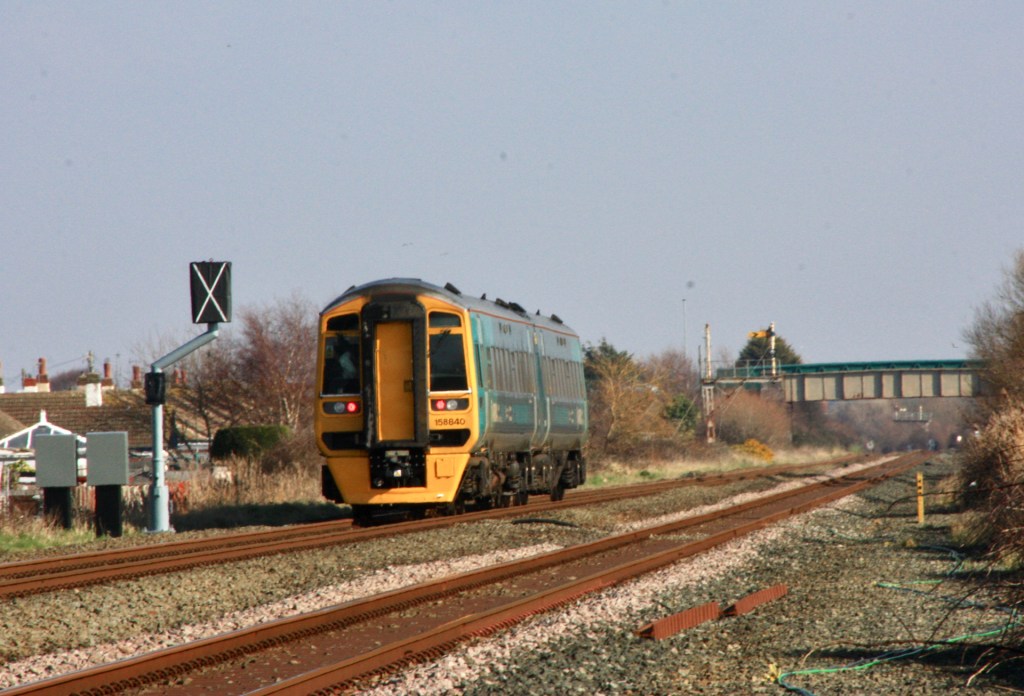
Prestatyn Signal Box controlled one of the last three working distant signals in North Wales (the other two being at Deganwy and Ty Croes) but PN14 was sadly not pulled off when 158840 approached it on 23 February 2018 (photo above).
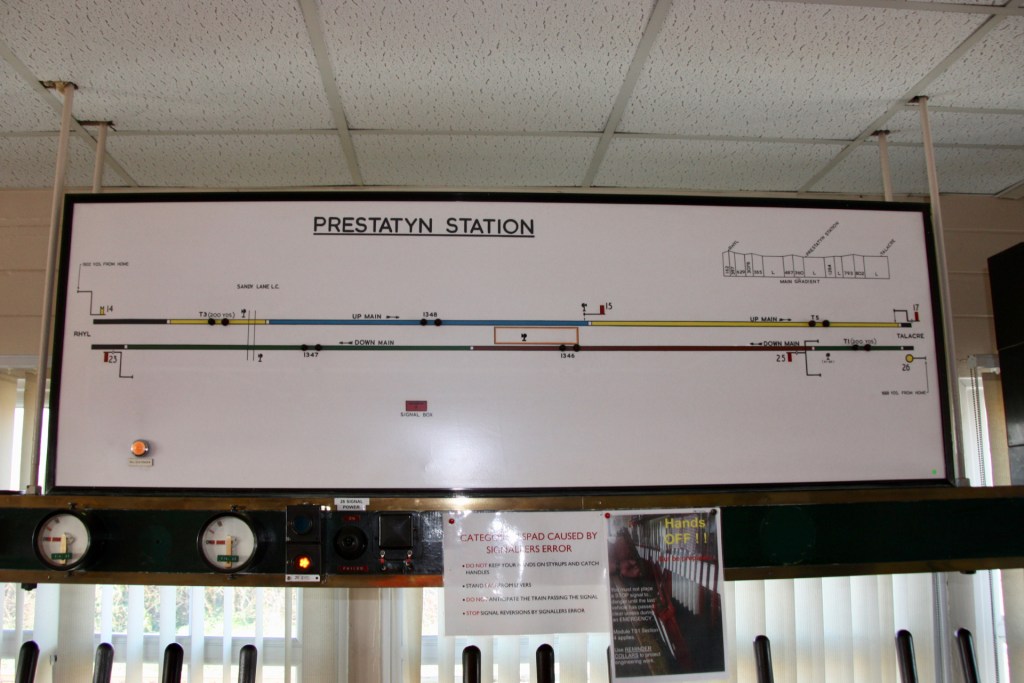
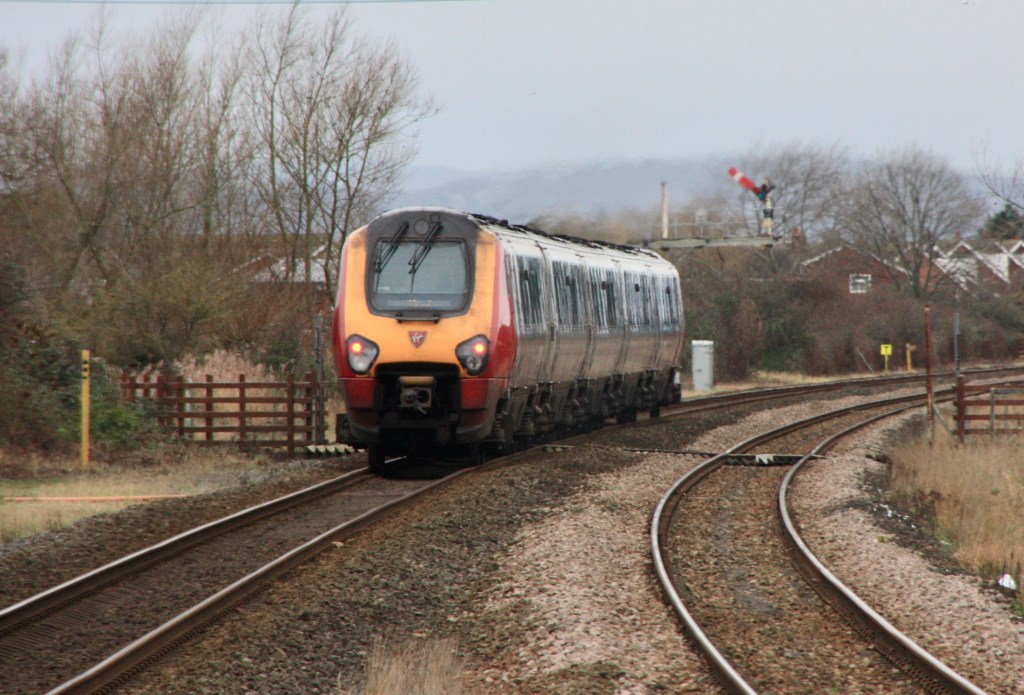
The distant signal stood on a bracket dating from the time when the route here was quadruple track, as did down section signal PN23, which can be seen above as Virgin Voyager 221115 is about to pass it on 2 February 2017 with a Holyhead-bound service.

By far the most impressive signal box amongst the seven to close was the Grade II-listed Rhyl No. 1 box, which is seen above on 2 February 2017 as 150230 passes with a service for Manchester Airport, while from the opposite end of the station the photo below shows 67008 departing on the same day with the 09.50 Manchester Piccadilly-Holyhead.
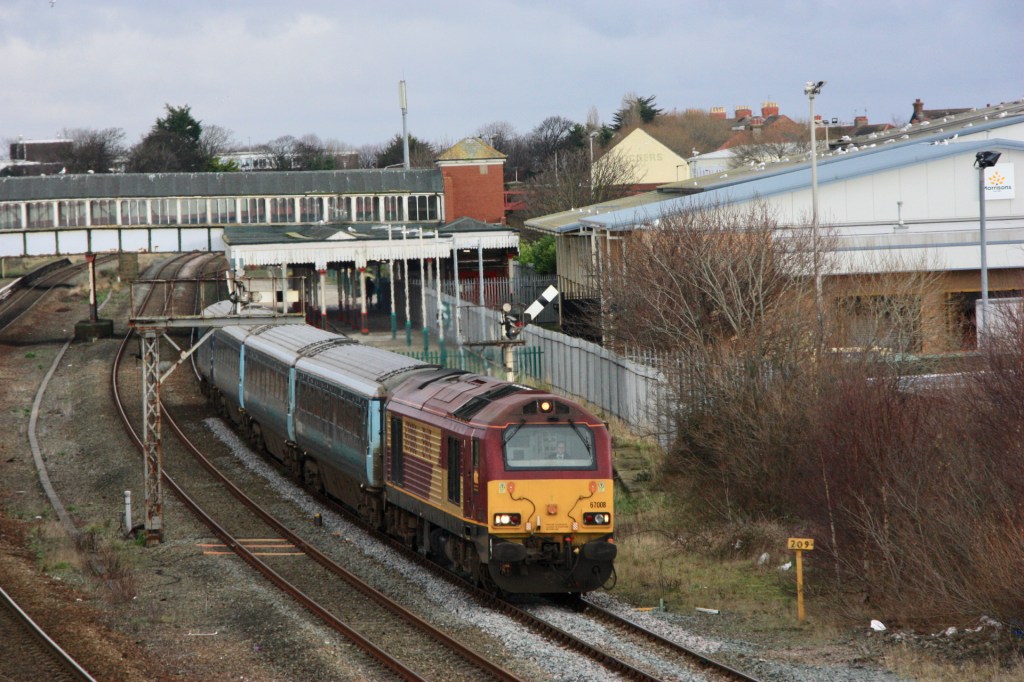
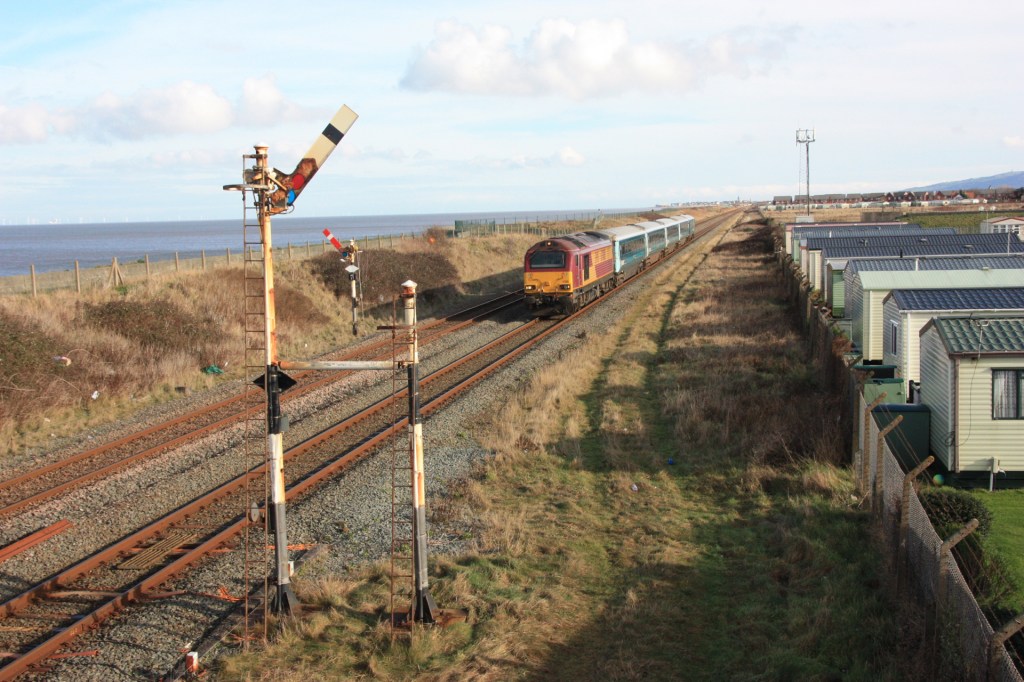
One day earlier (1 February 2017) 67008 is seen above hauling the same service as it is about to pass Abergele & Pensarn, where the down loop line and junction signal had recently been removed as part of the upgrade programme. Another view looking east on the same day (below) shows 175001 passing the box’s up section signal AE57 with a Holyhead-Cardiff Central service.

One notable loss on the south coast of England was at Newhaven, where signal NH35 was the last surviving semaphore in the area, controlled by nearby Newhaven Harbour Signal Box and signalling exit from Newhaven Marine station, recently closed, but for many years served by a “ghost train” – as seen below where 313216 departs at 20.15 on 24 May 2017.

Finally, just one year ago a major loss in East Anglia was the Wherry Lines routes from Norwich to Great Yarmouth and Lowestoft, which succumbed to re-signalling at the end of January 2020.

On the final day of semaphore signalling along the Great Yarmouth route (31 January 2020) the photo above shows 755328 departing Brundall with the 11.36 Norwich-Great Yarmouth, while the view below shows 755327 passing Chapel Road Level Crossing down distant signal CR1 with the 10.36 from Norwich.
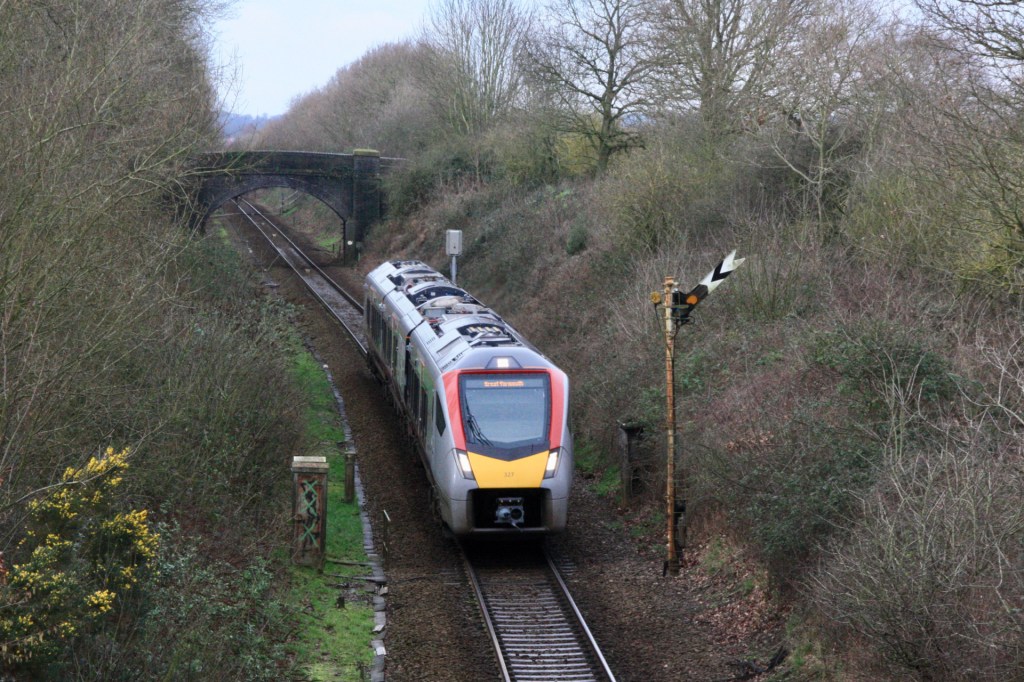
As Network Rail’s budget gets squeezed, semaphore signalling looks set to survive for a good few more years in some locations, but the renewal process continues and next month (February 2021) will see a major loss of our signalling heritage on Teesside.
Unless COVID-19 leads to further delay, 15 February will see implementation of a re-signalling project between Stockton-on-Tees and Billingham, which I featured last September, with closure of the network’s joint oldest surviving signal boxes (1870 – Norton South and Norton East) and loss of the fine array of semaphores seen in the photo below along with Norton East Signal Box.
My book “Britain’s last mechanical signalling” (published in July 2019) is still available from publishers Pen & Sword and from many online retailers.
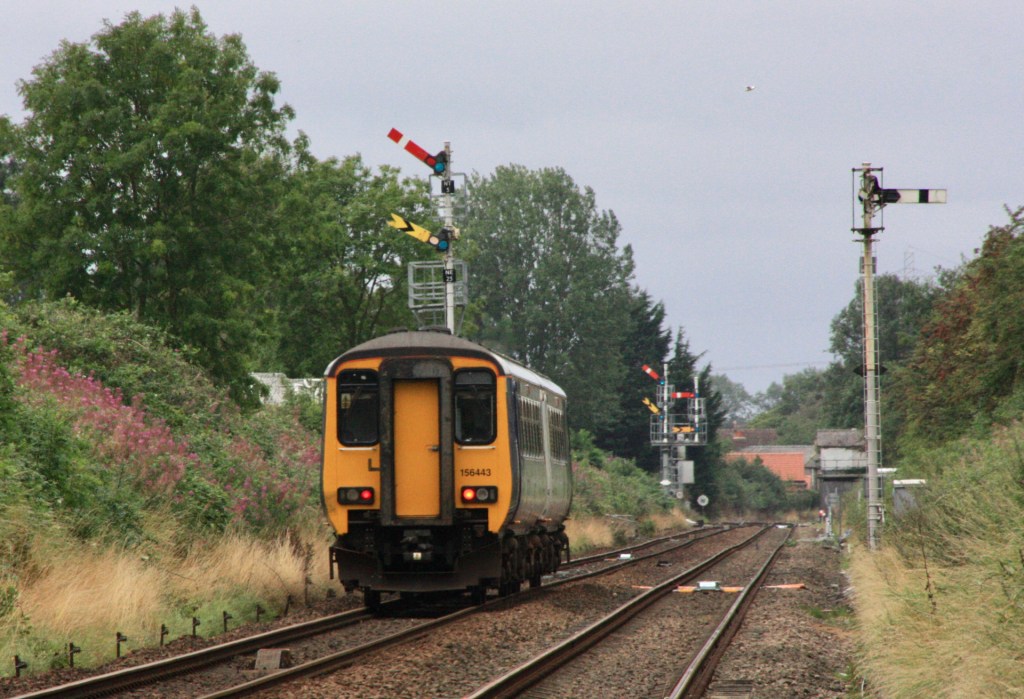

You must be logged in to post a comment.